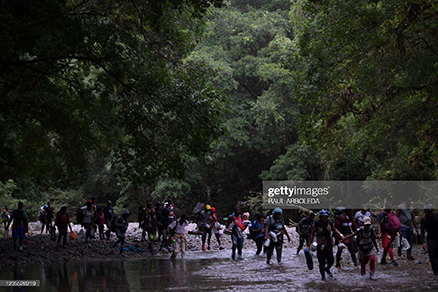By Elida Moreno
PANAMA CITY, Panama, Mon. Sept 27, 2021 (Reuters) – Up to 4,000 migrants, most of them Haitians, have passed through the treacherous jungles of the Darien Gap in Panama on the Colombian border as they make their way north to the United States, two Panamanian government sources said.
Between 3,500 to 4,000 migrants are passing through migration reception stations in Darien and Chiriqui, said a source with Panama’s security ministry, who requested anonymity. The group includes Cubans and other nationalities, the source said. From Acandi, they started on foot, armed with machetes, lanterns and tents to make the dangerous trek of at least five days to Panama through the Darien jungle, battling snakes, steep ravines, swollen rivers, tropical downpours and criminals often linked to drug trafficking.
Meanwhile, some 16,000 migrants are stuck in the northern Colombian beach town of Necocli, awaiting their turn on limited boat transport toward the Darien Gap, where smugglers guide groups through one of the most dangerous and impassable regions of Latin America.
Colombia and Panama agreed last month that 500 migrants could cross per day, but local officials have repeatedly urged them to raise the quota, saying it is far too low to keep pace with the up to 1,500 migrants who arrive in town daily.
Panama’s President Laurentino Cortizo told the United Nations General Assembly on Thursday that more than 80,000 irregular migrants have traveled through Panama this year. He called for international assistance, saying his country is spending its limited budget on migrant care.
So far this year, 88,514 migrants have entered Panama through the Darien jungle, according to figures from the National Migration Service, and Panama went from receiving an average of 800 migrants in January to 30,000 in August.
An impromptu camp arose in recent weeks on the U.S.-Mexican border that included Haitians, adding to President Joe Biden’s migration policy headaches. At its peak on Sept. 18 there were some 15,000 people there as Haitians flee economic, political and social chaos in their homeland.
The camp was cleared of thousands of Haitians by Friday, with most remaining in the United States for now and others expelled on deportation flights or returned to Mexico.
(Reporting by Elida Moreno; Writing by Anthony Esposito; editing by Grant McCool)










